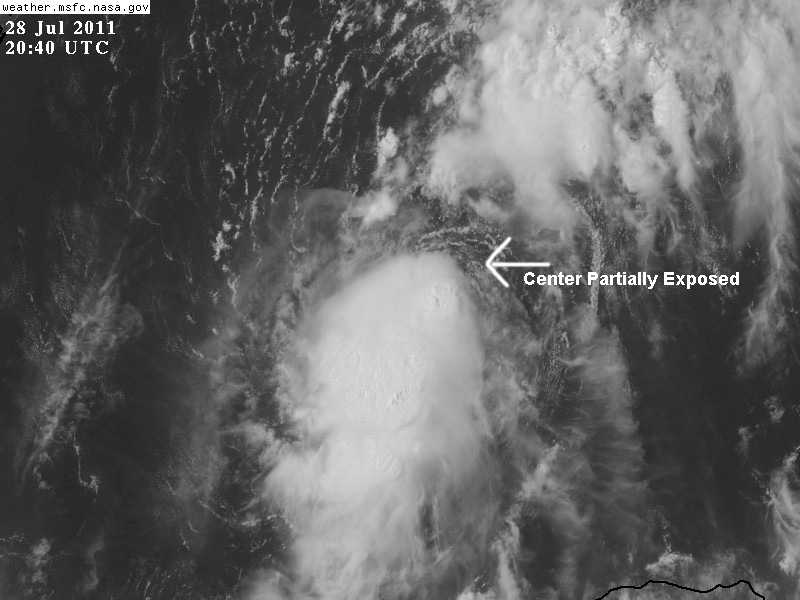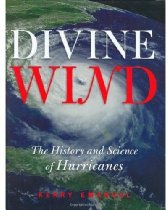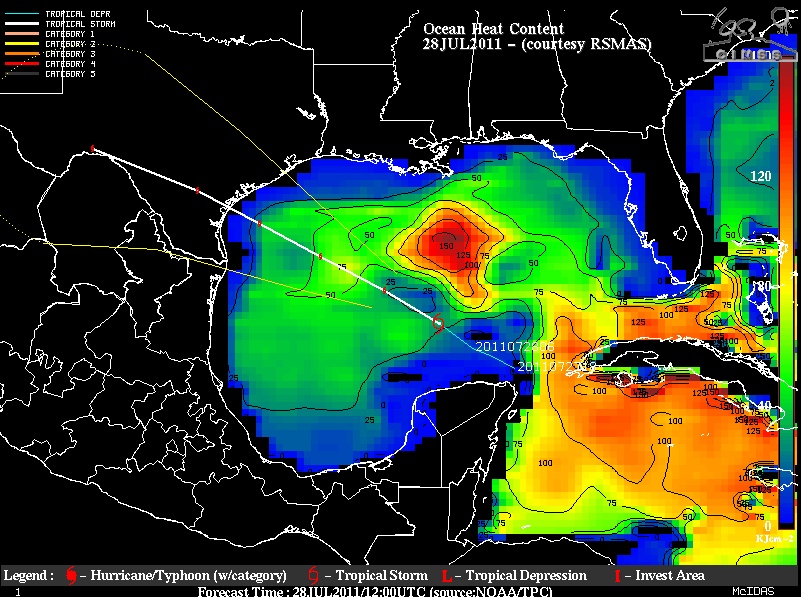28 July 2011
Tropical Storm Don Fights Wind Shear
Posted by Dan Satterfield

GOES Image of Don at 2049 GMT (4:40 PM EDT). Wind shear has exposed part of the low level circulation and this argues against rapid strengthening. Click for larger image.

Wind shear over the Gulf from CIMMS at the Uni. of Wisc. The best track from the NHC is on the image as well. Click for much larger image.
Tropical Storm Don will likely come ashore near Corpus Christi, TX on Friday evening as a tropical storm and not a hurricane. This is really good news, because it means Texas will get some much-needed rain without significant damage. There are several reasons why it is unlikely that Don will become a hurricane, the chief being the wind shear over the storm. Tropical systems like low wind speeds with unidirectional winds as you climb higher into the atmosphere.
Think how different the wind speed and direction is when you are on a moving sailboat, than when the boat is stopped. The moving tropical system sees the wind differently as it moves so examining the true wind shear can be difficult, but the latest satellite images show a partially exposed center with the heavy convection to the south. This indicates a northerly wind shear, and the shear looks to continue over the system until landfall. It may weaken some, and allow some minor strengthening but even this is iffy.
Another issue with Don is that while the surface waters are very warm in the Gulf, the depth of that warm water is not really that impressive along the path Don will likely take.
 Since tropical storms get their energy from the ocean, the lack of a thick layer of very warm water will limit the strengthening. Hurricane Katrina passed over a very warm layer of Gulf water before landfall and this caused it to become a very powerful storm. As the ocean water evaporates the heat needed to turn it into vapor is carried into the air. When the vapor condenses back to liquid, all that energy is released as heat. The heat warms the air and causes it to expand. As the air expands, the pressure lowers and more warm air swirls into the system causing the same process to feedback in a positive way.
Since tropical storms get their energy from the ocean, the lack of a thick layer of very warm water will limit the strengthening. Hurricane Katrina passed over a very warm layer of Gulf water before landfall and this caused it to become a very powerful storm. As the ocean water evaporates the heat needed to turn it into vapor is carried into the air. When the vapor condenses back to liquid, all that energy is released as heat. The heat warms the air and causes it to expand. As the air expands, the pressure lowers and more warm air swirls into the system causing the same process to feedback in a positive way.
This is a good time to mention the absolutely best book ever written for the general public on tropical meteorology. It’s by renowned hurricane expert Kerry Emanuel. Divine Wind is on the shelf of every meteorologist I know!



 Dan Satterfield has worked as an on air meteorologist for 32 years in Oklahoma, Florida and Alabama. Forecasting weather is Dan's job, but all of Earth Science is his passion. This journal is where Dan writes about things he has too little time for on air. Dan blogs about peer-reviewed Earth science for Junior High level audiences and up.
Dan Satterfield has worked as an on air meteorologist for 32 years in Oklahoma, Florida and Alabama. Forecasting weather is Dan's job, but all of Earth Science is his passion. This journal is where Dan writes about things he has too little time for on air. Dan blogs about peer-reviewed Earth science for Junior High level audiences and up.